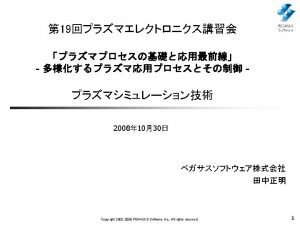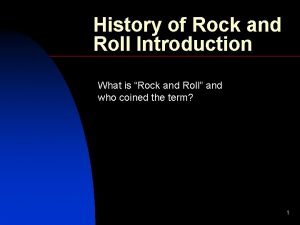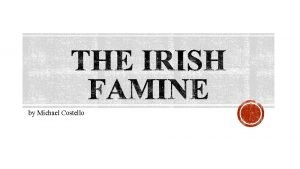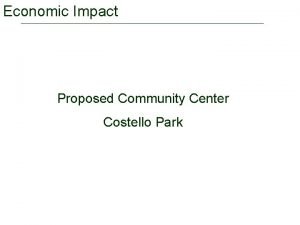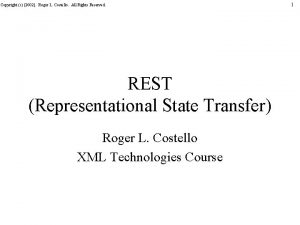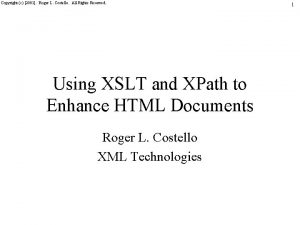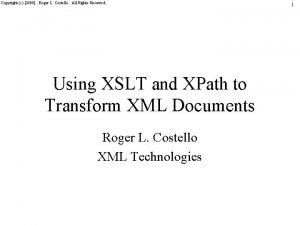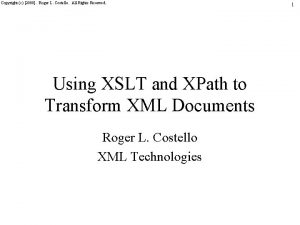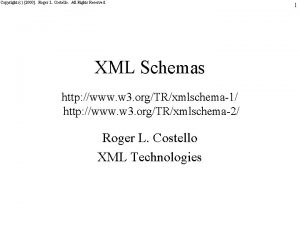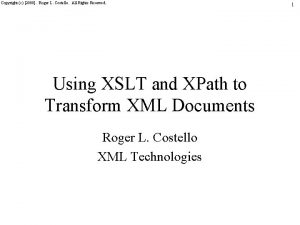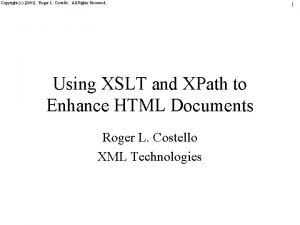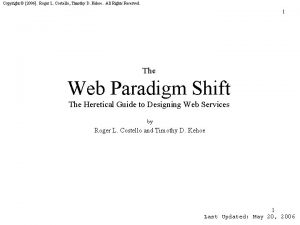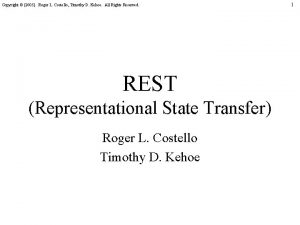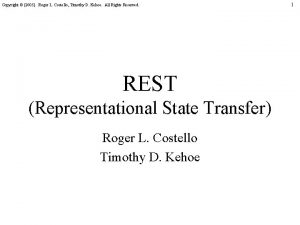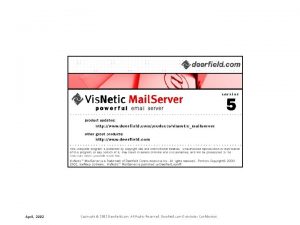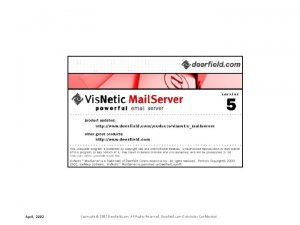Copyright c 2002 Roger L Costello All Rights
![Copyright (c) [2002]. Roger L. Costello. All Rights Reserved. Using Extension Elements and Extension Copyright (c) [2002]. Roger L. Costello. All Rights Reserved. Using Extension Elements and Extension](https://slidetodoc.com/presentation_image_h2/ca17b4114164e7ab3bd789420c28f54e/image-1.jpg)
![Copyright (c) [2002]. Roger L. Costello. All Rights Reserved. Extension Elements • The XSL Copyright (c) [2002]. Roger L. Costello. All Rights Reserved. Extension Elements • The XSL](https://slidetodoc.com/presentation_image_h2/ca17b4114164e7ab3bd789420c28f54e/image-2.jpg)
![Copyright (c) [2002]. Roger L. Costello. All Rights Reserved. Example Extension Element: instruct the Copyright (c) [2002]. Roger L. Costello. All Rights Reserved. Example Extension Element: instruct the](https://slidetodoc.com/presentation_image_h2/ca17b4114164e7ab3bd789420c28f54e/image-3.jpg)
![Copyright (c) [2002]. Roger L. Costello. All Rights Reserved. Vendor-specific • Each implementor gives Copyright (c) [2002]. Roger L. Costello. All Rights Reserved. Vendor-specific • Each implementor gives](https://slidetodoc.com/presentation_image_h2/ca17b4114164e7ab3bd789420c28f54e/image-4.jpg)
![Copyright (c) [2002]. Roger L. Costello. All Rights Reserved. How to use an extension Copyright (c) [2002]. Roger L. Costello. All Rights Reserved. How to use an extension](https://slidetodoc.com/presentation_image_h2/ca17b4114164e7ab3bd789420c28f54e/image-5.jpg)
![Copyright (c) [2002]. Roger L. Costello. All Rights Reserved. 6 Problem • Write a Copyright (c) [2002]. Roger L. Costello. All Rights Reserved. 6 Problem • Write a](https://slidetodoc.com/presentation_image_h2/ca17b4114164e7ab3bd789420c28f54e/image-6.jpg)
![Copyright (c) [2002]. Roger L. Costello. All Rights Reserved. 7 platinum. xml Fitness. Center. Copyright (c) [2002]. Roger L. Costello. All Rights Reserved. 7 platinum. xml Fitness. Center.](https://slidetodoc.com/presentation_image_h2/ca17b4114164e7ab3bd789420c28f54e/image-7.jpg)
![Copyright (c) [2002]. Roger L. Costello. All Rights Reserved. <xsl: copy-of select="xpath"/> • This Copyright (c) [2002]. Roger L. Costello. All Rights Reserved. <xsl: copy-of select="xpath"/> • This](https://slidetodoc.com/presentation_image_h2/ca17b4114164e7ab3bd789420c28f54e/image-8.jpg)
![Copyright (c) [2002]. Roger L. Costello. All Rights Reserved. 9 <? xml version="1. 0"? Copyright (c) [2002]. Roger L. Costello. All Rights Reserved. 9 <? xml version="1. 0"?](https://slidetodoc.com/presentation_image_h2/ca17b4114164e7ab3bd789420c28f54e/image-9.jpg)
![Copyright (c) [2002]. Roger L. Costello. All Rights Reserved. Don’t forget extension-elementprefixes • The Copyright (c) [2002]. Roger L. Costello. All Rights Reserved. Don’t forget extension-elementprefixes • The](https://slidetodoc.com/presentation_image_h2/ca17b4114164e7ab3bd789420c28f54e/image-10.jpg)
![Copyright (c) [2002]. Roger L. Costello. All Rights Reserved. Extension Functions • We have Copyright (c) [2002]. Roger L. Costello. All Rights Reserved. Extension Functions • We have](https://slidetodoc.com/presentation_image_h2/ca17b4114164e7ab3bd789420c28f54e/image-11.jpg)
![Copyright (c) [2002]. Roger L. Costello. All Rights Reserved. Dynamic (run-time) Evaluation • Many Copyright (c) [2002]. Roger L. Costello. All Rights Reserved. Dynamic (run-time) Evaluation • Many](https://slidetodoc.com/presentation_image_h2/ca17b4114164e7ab3bd789420c28f54e/image-12.jpg)
![Copyright (c) [2002]. Roger L. Costello. All Rights Reserved. Fitness. Center. xml check. Fitness. Copyright (c) [2002]. Roger L. Costello. All Rights Reserved. Fitness. Center. xml check. Fitness.](https://slidetodoc.com/presentation_image_h2/ca17b4114164e7ab3bd789420c28f54e/image-13.jpg)
![Copyright (c) [2002]. Roger L. Costello. All Rights Reserved. 14 <? xml version="1. 0"? Copyright (c) [2002]. Roger L. Costello. All Rights Reserved. 14 <? xml version="1. 0"?](https://slidetodoc.com/presentation_image_h2/ca17b4114164e7ab3bd789420c28f54e/image-14.jpg)
- Slides: 14
![Copyright c 2002 Roger L Costello All Rights Reserved Using Extension Elements and Extension Copyright (c) [2002]. Roger L. Costello. All Rights Reserved. Using Extension Elements and Extension](https://slidetodoc.com/presentation_image_h2/ca17b4114164e7ab3bd789420c28f54e/image-1.jpg)
Copyright (c) [2002]. Roger L. Costello. All Rights Reserved. Using Extension Elements and Extension Functions with XSLT and XPath Roger L. Costello XML Technologies 1
![Copyright c 2002 Roger L Costello All Rights Reserved Extension Elements The XSL Copyright (c) [2002]. Roger L. Costello. All Rights Reserved. Extension Elements • The XSL](https://slidetodoc.com/presentation_image_h2/ca17b4114164e7ab3bd789420c28f54e/image-2.jpg)
Copyright (c) [2002]. Roger L. Costello. All Rights Reserved. Extension Elements • The XSL processor understands how to process xsl: template, xsl: apply-templates, xsl: if, xsl: for-each, etc – That is, it understands the vocabulary in the XSL namespace • XSL Processor implementers oftentimes provide additional elements that you may use in your stylesheet – These extension elements will belong to a namespace defined by the implementer 2
![Copyright c 2002 Roger L Costello All Rights Reserved Example Extension Element instruct the Copyright (c) [2002]. Roger L. Costello. All Rights Reserved. Example Extension Element: instruct the](https://slidetodoc.com/presentation_image_h2/ca17b4114164e7ab3bd789420c28f54e/image-3.jpg)
Copyright (c) [2002]. Roger L. Costello. All Rights Reserved. Example Extension Element: instruct the xsl processor to output to another file • Many of the xsl processor implementers provide an extension element that instructs the xsl processor to output the contents of the element to another file. – Thus, your stylesheet can generate multiple output files! XML XSL Processor XSL 3
![Copyright c 2002 Roger L Costello All Rights Reserved Vendorspecific Each implementor gives Copyright (c) [2002]. Roger L. Costello. All Rights Reserved. Vendor-specific • Each implementor gives](https://slidetodoc.com/presentation_image_h2/ca17b4114164e7ab3bd789420c28f54e/image-4.jpg)
Copyright (c) [2002]. Roger L. Costello. All Rights Reserved. Vendor-specific • Each implementor gives the extension element a different name: – saxon calls it: output – xalan calls it: write 4
![Copyright c 2002 Roger L Costello All Rights Reserved How to use an extension Copyright (c) [2002]. Roger L. Costello. All Rights Reserved. How to use an extension](https://slidetodoc.com/presentation_image_h2/ca17b4114164e7ab3bd789420c28f54e/image-5.jpg)
Copyright (c) [2002]. Roger L. Costello. All Rights Reserved. How to use an extension element 1. Declare the namespace that the extension element belongs to: saxon: xmlns: saxon="http: //icl. com/saxon" xalan: xmlns: xalan="http: //org. apache. xalan. xslt. extensions. Redirect" 2. Indicate that any element that is namespace qualified by the prefix is an extension element, i. e. , it has a specific meaning and should be processed using the implementer's code: saxon: extension-element-prefixes="saxon" xalan: extension-element-prefixes="xalan" 3. Use the extension element: saxon: <saxon: output href=". . . "> -- anything in here will go to the file specified --</saxon: output> xalan: <xalan: write file=". . . "> -- anything in here will go to the file specified --</xalan: write> 5
![Copyright c 2002 Roger L Costello All Rights Reserved 6 Problem Write a Copyright (c) [2002]. Roger L. Costello. All Rights Reserved. 6 Problem • Write a](https://slidetodoc.com/presentation_image_h2/ca17b4114164e7ab3bd789420c28f54e/image-6.jpg)
Copyright (c) [2002]. Roger L. Costello. All Rights Reserved. 6 Problem • Write a stylesheet which outputs the platinum members in one file, the gold members in another file, and the third file is an index to the other two files.
![Copyright c 2002 Roger L Costello All Rights Reserved 7 platinum xml Fitness Center Copyright (c) [2002]. Roger L. Costello. All Rights Reserved. 7 platinum. xml Fitness. Center.](https://slidetodoc.com/presentation_image_h2/ca17b4114164e7ab3bd789420c28f54e/image-7.jpg)
Copyright (c) [2002]. Roger L. Costello. All Rights Reserved. 7 platinum. xml Fitness. Center. xml XSL Processor <Platinum. Members href="platinum. xml"/> <Gold. Members href="gold. xml"/> new-Fitness. Center. xml gold. xml Fitness. Center. xsl
![Copyright c 2002 Roger L Costello All Rights Reserved xsl copyof selectxpath This Copyright (c) [2002]. Roger L. Costello. All Rights Reserved. <xsl: copy-of select="xpath"/> • This](https://slidetodoc.com/presentation_image_h2/ca17b4114164e7ab3bd789420c28f54e/image-8.jpg)
Copyright (c) [2002]. Roger L. Costello. All Rights Reserved. <xsl: copy-of select="xpath"/> • This element instructs an xsl processor to copy to the output file the element selected by xpath, plus all its descendents. <xsl: template match="Member"> <xsl: copy-of select=". "/> </xsl: template> This instructs the xsl processor to copy everything from <Member> to </Member> i. e. , the Member element and all its descendents. 8
![Copyright c 2002 Roger L Costello All Rights Reserved 9 xml version1 0 Copyright (c) [2002]. Roger L. Costello. All Rights Reserved. 9 <? xml version="1. 0"?](https://slidetodoc.com/presentation_image_h2/ca17b4114164e7ab3bd789420c28f54e/image-9.jpg)
Copyright (c) [2002]. Roger L. Costello. All Rights Reserved. 9 <? xml version="1. 0"? > <xsl: stylesheet xmlns: xsl="http: //www. w 3. org/1999/XSL/Transform" xmlns: saxon="http: //icl. com/saxon" extension-element-prefixes="saxon" version="1. 0"> <xsl: output method="xml"/> <xsl: template match="Fitness. Center"> <Fitness. Center> <Platinum. Members href="platinum. xml"/> <saxon: output href="platinum. xml"> <Platinum. Members> <xsl: for-each select="Member[@level='platinum']"> <xsl: copy-of select=". "/> </xsl: for-each> </Platinum. Members> </saxon: output> <Gold. Members href="gold. xml"/> <saxon: output href="gold. xml"> <Gold. Members> <xsl: for-each select="Member[@level='gold']"> <xsl: copy-of select=". "/> </xsl: for-each> </Gold. Members> </saxon: output> </Fitness. Center> </xsl: template> </xsl: stylesheet> See extension-example 01
![Copyright c 2002 Roger L Costello All Rights Reserved Dont forget extensionelementprefixes The Copyright (c) [2002]. Roger L. Costello. All Rights Reserved. Don’t forget extension-elementprefixes • The](https://slidetodoc.com/presentation_image_h2/ca17b4114164e7ab3bd789420c28f54e/image-10.jpg)
Copyright (c) [2002]. Roger L. Costello. All Rights Reserved. Don’t forget extension-elementprefixes • The extension-element-prefixes is used to tell the xsl processor, "whenever you encounter an element with any of these prefixes listed here you are to treat it as an extension element, and process it using the implementer's code" • If you fail to do so the xsl processor will simply output the element literally (see extension-example 02) 10
![Copyright c 2002 Roger L Costello All Rights Reserved Extension Functions We have Copyright (c) [2002]. Roger L. Costello. All Rights Reserved. Extension Functions • We have](https://slidetodoc.com/presentation_image_h2/ca17b4114164e7ab3bd789420c28f54e/image-11.jpg)
Copyright (c) [2002]. Roger L. Costello. All Rights Reserved. Extension Functions • We have seen some of the functions that XSL provides: substring(), contains(), substring-before, etc. • Many xsl processor implementers provide additional functions. You signify that a function is an extension function by namespace qualifying it. 11
![Copyright c 2002 Roger L Costello All Rights Reserved Dynamic runtime Evaluation Many Copyright (c) [2002]. Roger L. Costello. All Rights Reserved. Dynamic (run-time) Evaluation • Many](https://slidetodoc.com/presentation_image_h2/ca17b4114164e7ab3bd789420c28f54e/image-12.jpg)
Copyright (c) [2002]. Roger L. Costello. All Rights Reserved. Dynamic (run-time) Evaluation • Many xsl processor implementers give you an extension function that enables you to dynamically evaluate an expression. – That is, you can generate the expression on the fly, or read it in from an external file. • SAXON provides an extension function called evaluate to do this. 12
![Copyright c 2002 Roger L Costello All Rights Reserved Fitness Center xml check Fitness Copyright (c) [2002]. Roger L. Costello. All Rights Reserved. Fitness. Center. xml check. Fitness.](https://slidetodoc.com/presentation_image_h2/ca17b4114164e7ab3bd789420c28f54e/image-13.jpg)
Copyright (c) [2002]. Roger L. Costello. All Rights Reserved. Fitness. Center. xml check. Fitness. Center. xml 13 XSL Processor results. xml Fitness. Center. xsl This file contains expressions that are dynamically evaluated against Fitness. Center. xml Example: provide an xpath expression that ensures that each Member's level attribute is either Platinum or Gold, and nothing else.
![Copyright c 2002 Roger L Costello All Rights Reserved 14 xml version1 0 Copyright (c) [2002]. Roger L. Costello. All Rights Reserved. 14 <? xml version="1. 0"?](https://slidetodoc.com/presentation_image_h2/ca17b4114164e7ab3bd789420c28f54e/image-14.jpg)
Copyright (c) [2002]. Roger L. Costello. All Rights Reserved. 14 <? xml version="1. 0"? > <xsl: stylesheet xmlns: xsl="http: //www. w 3. org/1999/XSL/Transform" xmlns: saxon="http: //icl. com/saxon" extension-element-prefixes="saxon" version="1. 0"> <xsl: output method="xml"/> <xsl: variable name="tests" select="document('check. Fitness. Center. xml')"/> <xsl: template match="/"> <xsl: variable name="here" select=". "/> <Fitness. Center-results> <xsl: for-each select="$tests//xpath"> <result> <xsl: variable name="xpath" select=". "/> <xsl: value-of select="$xpath"/> <xsl: for-each select="$here"> <xsl: choose> <xsl: when test="saxon: evaluate($xpath)"> <xsl: text> SUCCEEDED</xsl: text> </xsl: when> <xsl: otherwise> <xsl: text> FAILED</xsl: text> </xsl: otherwise> </xsl: choose> </xsl: for-each> <xsl: text> </result> </xsl: for-each> </Fitness. Center-results> </xsl: template> </xsl: stylesheet> Now any references is to elements in check. Fitness. Center. xml Takes us back to referencing elements in Fitness. Center. xml
 Copyright 2015 all rights reserved
Copyright 2015 all rights reserved Copyright © 2015 all rights reserved
Copyright © 2015 all rights reserved Dell all rights reserved copyright 2009
Dell all rights reserved copyright 2009 Copyright © 2018 all rights reserved
Copyright © 2018 all rights reserved Copyright 2002
Copyright 2002 Copyright 2002
Copyright 2002 Jk costello
Jk costello Tangerine paul fisher
Tangerine paul fisher Rock and roll nnn
Rock and roll nnn Philippa costello
Philippa costello Costello landscaping
Costello landscaping Michael costello ireland
Michael costello ireland Dianne costello
Dianne costello Costello park
Costello park Positive rights vs negative rights
Positive rights vs negative rights




